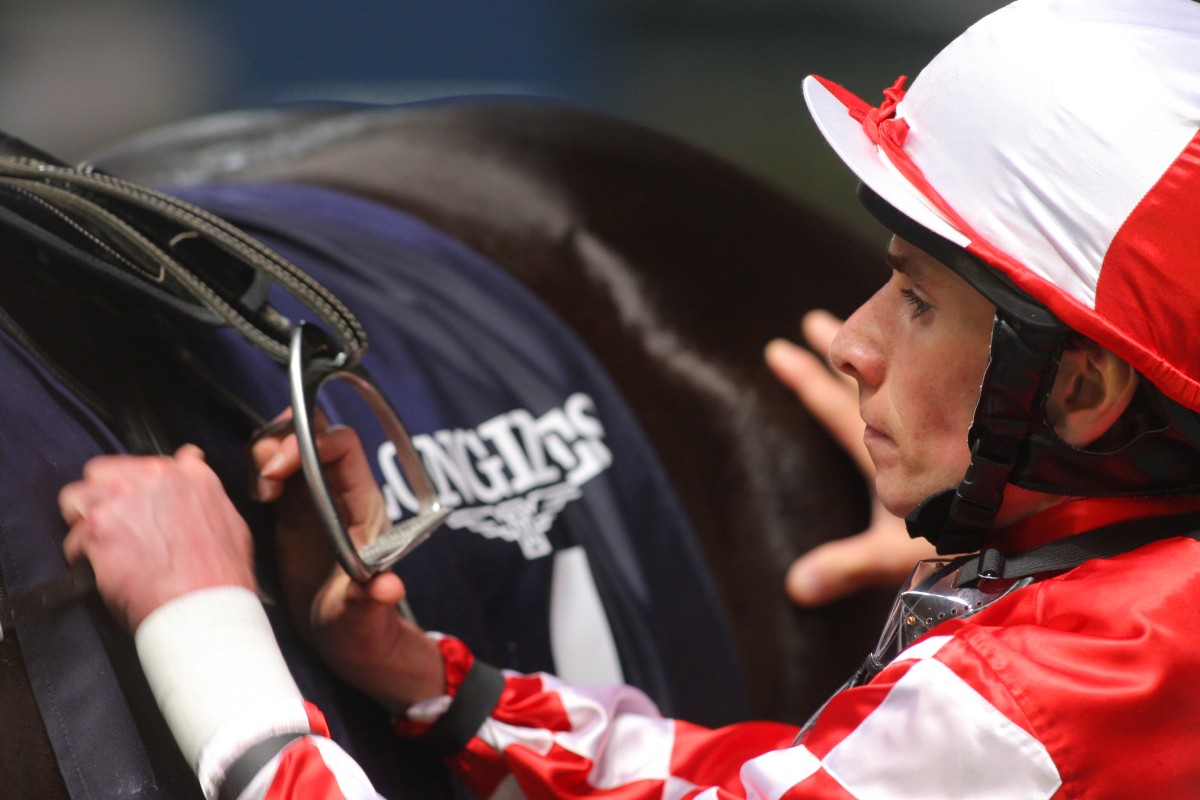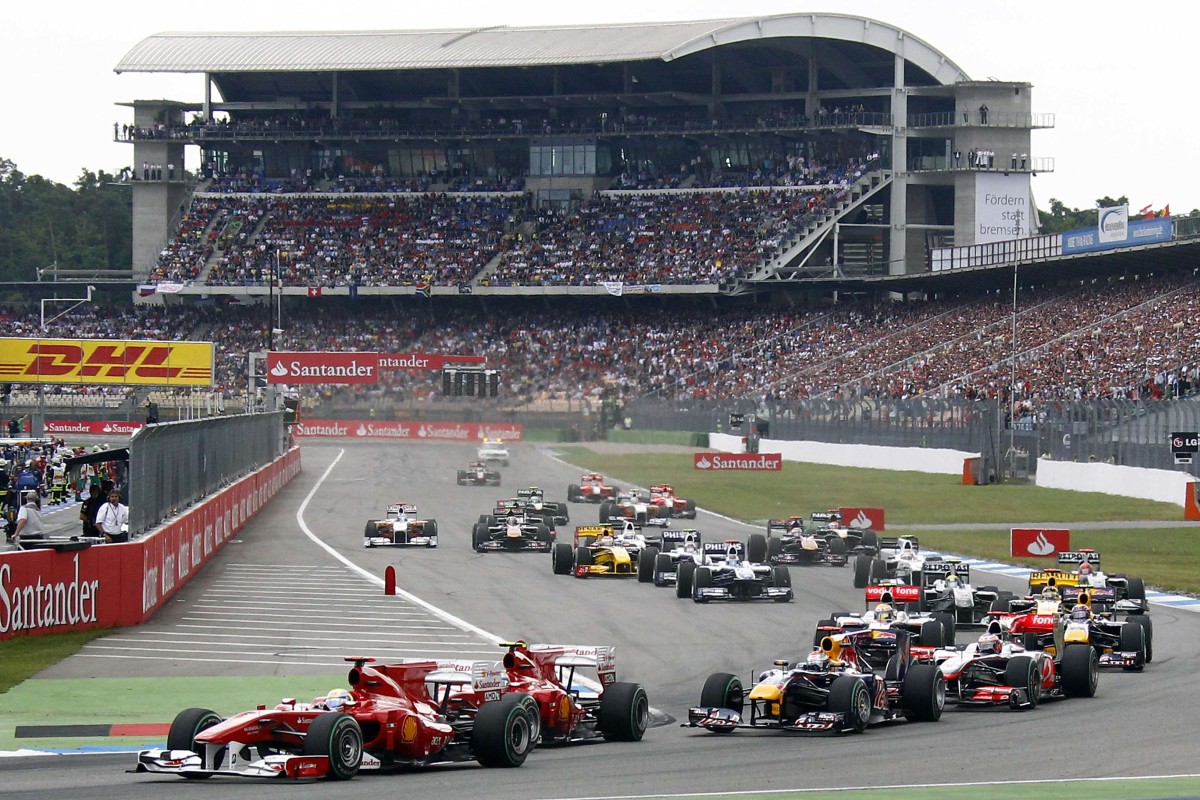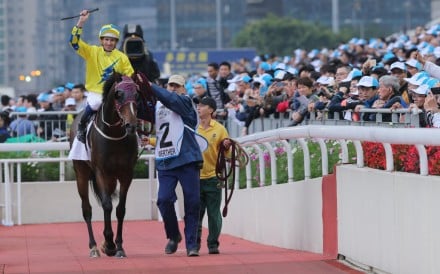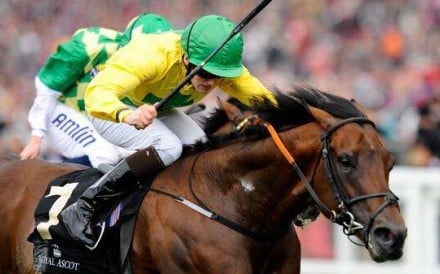Sunday’s Hong Kong Derby produced a plethora of stories, as one would expect from such an intriguing race, but perhaps the most overlooked was the saga surrounding Ryan Moore’s delayed arrival.
In a scene resembling the Hollywood entrance of Phar Lap before his Melbourne Cup win, as captured in the 1983 film about the Australian champion, the premier English jockey sprinted through the Sha Tin gates, luggage in tow, stumbling over his feet – just as his Derby mount Got Fly entered the parade ring 20 minutes before the classic.
Incredibly, despite a far from ideal preparation, he almost stole the race, trucking up strongly on the outside on Richard Gibson’s charge but finding John Size’s emerging star Luger too good.
It had been some journey for Moore. He was required to stay in the UK to ride Jeremy Noseda’s Grandeur in the Winter Derby at Lingfield before making the 40-mile trip to Heathrow. He would have arrived into Hong Kong in plenty of time for his first ride, but a three-hour delay on the tarmac ensured, as Moore himself said, “the best laid plans came astray.”
It was only a short-lived stopover in Hong Kong, too. Less than eight hours after he had touched down, the man who won the first World’s Best Jockey award last year was off again, this time to Sydney where he partnered Cox Plate winner Adelaide in a trackwork gallop.
Such is the life of a top jockey these days, traversing from town to town like a gypsy – albeit a gypsy up the pointy end of the plane.

In this sense, the world’s top races are becoming a circuit, with jockeys able to target the world’s biggest (or richest) races and operate on a fly-in, fly-out basis. There’s a very easy comparison in sport – they are becoming horse racing’s equivalent of Formula One drivers.
Jockeys have long attempted to take their skills from country to country – just ask Tony Cruz about his exploits in France – but never has it been so easy to frequent the premier races.
Look at last weekend’s pool of riders at Sha Tin – Joao Moreira and Hugh Bowman had ridden the day before in Melbourne, finishing first and third in Australia’s top sprint, the Newmarket Handicap; Tommy Berry and Tye Angland flew in from Sydney; Christophe Soumillon rode at Chantilly on Friday, Moore at Lingfield before his delay. Just a week before, Brett Prebble and Douglas Whyte had quinellaed the Australian Guineas in Melbourne.
It’s the new era for the travelling jockey, and perhaps it is time for more of a focus on the riders attracted to the big meetings. In fact, maybe Moore, Soumillon, Moreira and the ilk will become the drawcards which create interest for the big races. They are Lewis Hamilton, Nico Rosberg and Sebastian Vettel (heaven forbid) for horse racing fans.
In fact, “Magic Man” Moreira has been compared to compatriot, the late legendary Formula One driver Ayrton Senna, in terms of his prodigious ability and his marketable nature. He’s probably Brazil’s most prolific non-football sportsman since Senna, and yet his name would hardly be recognised by many in South America.

Let’s face it: a keen fan doesn’t go to a Formula One race to cheer on a car. Maybe they’ll cheer on a manufacturer – Mercedes, Red Bull, Ferrari. But they are there essentially to barrack for their favourite driver and to see the world’s best in action.
Although the car is a crucial element – just look at the Mercedes domination in last weekend’s Australian Grand Prix – it’s the skill of the drivers that is front and centre. Put me in the Mercedes vehicle and it’d probably take half an hour to complete a lap.
Racing has the same opportunity here. The horses are a crucial element and it’s far easier to become emotionally attached to a horse, a living and breathing creature, than it is to a car.
But with the jockeys, there is the opportunity to have a travelling roadshow that extends globally, a chance to see the world’s best in action.
There have been myriad attempts to establish a Formula One-style circuit for the world’s best horses. There was the Emirates World Series at the turn of the century, and in more recent times, there has been the Global Sprint Challenge, the Asian Mile Challenge and a whole heap of bonus-driven races that haven’t done a great deal in encouraging overseas competition.
There will always be types like Red Cadeaux, Side Glance and Gordon Lord Byron who spend the year abroad, and the big carnivals will always attract horses chasing the prize money or prestige. The Dubai World Cup card next week, for example, is going to be mostly about the horses that have shipped in from the United States, Europe or Asia.

But very few horses have the capacity to maintain their best form from country to country over an extended period. In the end, horses are not machines – they are flesh and blood, prone to injuries and incidents. It’s far easier for jockeys to be able to travel to all corners of the world, just as Formula One drivers do constantly.
We have been critical of the Longines World’s Best Jockey concept in the past – the notion of determining the best jockey based on finishing position in 100 races seemed absurd, an attempt to quantify something which cannot be quantified – but it is a strong opportunity to create a grand prix circuit where the best jockeys are seen in the top races.
As a marketing tool, it is gold – people at a track, not only cheering on their favourite horses but their favourite riders.
The change is slowly beginning. Moore, James Doyle and William Buick ride in the world’s richest two-year-old race, the Golden Slipper, in Sydney this weekend – and they would probably have been joined by Moreira and Purton if not for a Saturday Hong Kong meeting.
A week later, four of those five will be in Dubai, with Purton instead in Japan riding Aerovelocity in the Takamatsunomiya Kinen. The following week, they’ll all be back in Sydney.
As the world becomes smaller, expect more stories of jockeys arriving late for races – and more Hollywood endings.




















